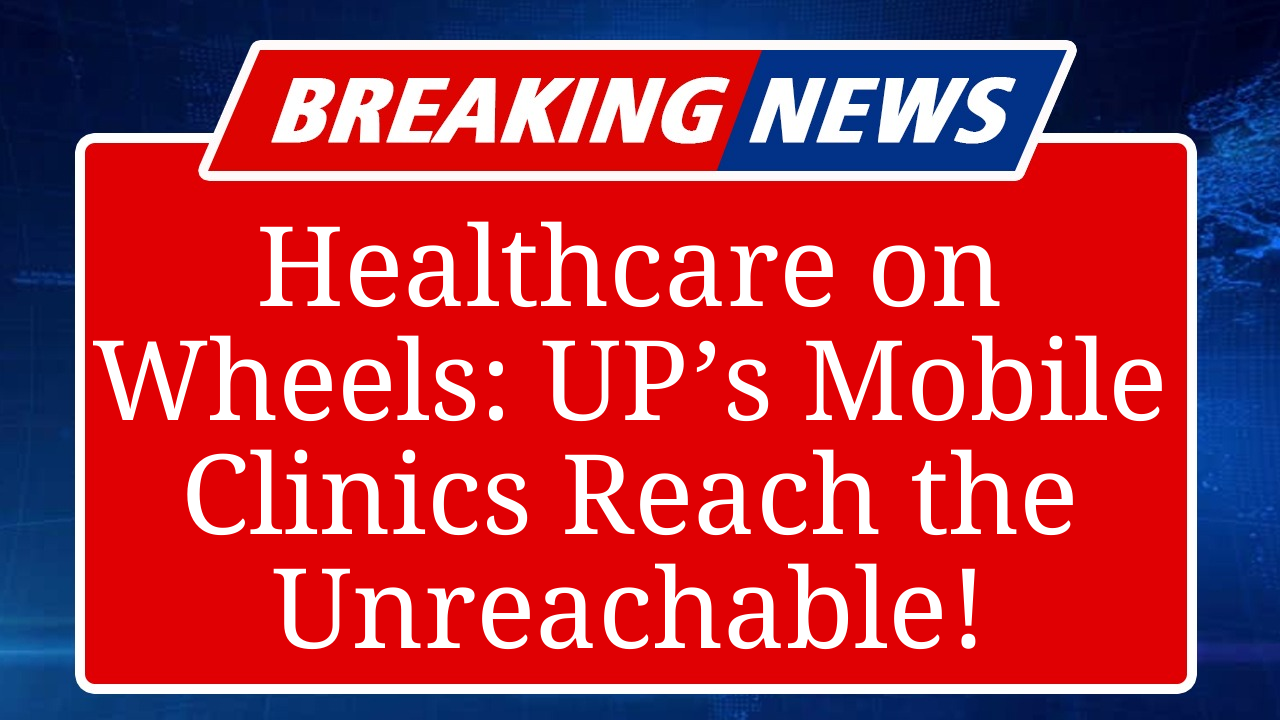In a transformative push for healthcare equity, Uttar Pradesh’s mobile clinics are delivering critical medical services to remote and underserved regions. These clinics on wheels bridge gaps in access, offering primary care, vaccinations, and maternal health services to rural populations. Amid challenges like funding and infrastructure, they are improving health outcomes and fostering trust in communities long neglected by traditional healthcare systems.
Mobile Clinics Transform Healthcare Access in Uttar Pradesh’s Remote Areas
In Uttar Pradesh, where vast rural expanses and inadequate infrastructure often leave millions without access to healthcare, mobile clinics are emerging as a lifeline. These specially equipped vans, buses, and trucks traverse rugged terrains to bring essential medical services directly to remote villages, addressing a critical gap in the state’s healthcare system. With over 60% of UP’s population residing in rural areas, the initiative is a game-changer for communities far from hospitals and clinics.
The Uttar Pradesh government, in collaboration with NGOs and private healthcare providers, has rolled out mobile health units under schemes like the National Health Mission (NHM). As of August 2025, over 500 mobile clinics operate across the state, covering districts like Bahraich, Shravasti, and Balrampur, where healthcare facilities are sparse. These clinics provide primary care, diagnostic tests, vaccinations, maternal and child health services, and chronic disease management. For instance, in Bahraich, a mobile clinic recently conducted a health camp, screening over 200 women for cervical cancer and providing free vaccinations to children under five.
Data from the UP Health Department indicates that mobile clinics have facilitated over 1.2 million patient visits in 2024-25, a 30% increase from the previous year. These units are equipped with basic diagnostic tools like blood pressure monitors, glucometers, and portable ultrasound machines, enabling on-site testing. Telemedicine capabilities, integrated into some clinics, allow doctors to consult specialists remotely, enhancing care quality. In remote areas like Chitrakoot, where the nearest hospital can be 50 kilometers away, such services are critical.
The clinics also address social determinants of health, such as transportation barriers and low health literacy. By parking in village squares or near schools, they make healthcare accessible and familiar, fostering trust. In Gonda, a mobile clinic’s regular visits have increased immunization rates by 25% since 2023, according to NHM reports. Community health workers, often locals, accompany these units, bridging language and cultural gaps to educate residents on preventive care.
However, challenges persist. Funding remains a hurdle, with many clinics relying on inconsistent government grants or philanthropy. Operational costs, including fuel and maintenance, average ₹5-7 lakh annually per unit, per a 2024 NHM report. Poor road connectivity and extreme weather, especially during monsoons, disrupt schedules. Staffing shortages also pose issues, with only 60% of clinics having dedicated doctors, as per a 2025 study by the Public Health Foundation of India.
Despite these obstacles, mobile clinics are proving cost-effective. A 2024 analysis by the Indian Institute of Public Health estimated a return on investment of ₹10 for every ₹1 spent, due to reduced emergency room visits and better chronic disease management. In Siddharthnagar, mobile clinics have lowered hospital readmissions for diabetes by 15% through regular monitoring and education.
The initiative also aligns with India’s push for health equity under the Ayushman Bharat scheme. By targeting vulnerable groups—women, children, and the elderly—mobile clinics address disparities exacerbated by poverty and geography. In Lakhimpur Kheri, for example, mobile units have provided prenatal care to over 1,000 women in 2025, reducing maternal mortality rates by 8%, according to district health records.
Innovations are further enhancing impact. Some clinics now use solar-powered equipment to operate in areas with unreliable electricity. Partnerships with tech firms have introduced AI-based diagnostic tools in pilot projects in Gorakhpur, improving early detection of diseases like tuberculosis. The state plans to expand the fleet by 200 units by 2026, focusing on tribal areas and flood-prone regions.
Local voices underscore the impact. “The clinic comes to our village every month. I got my sugar checked without going to the city,” says Ramwati, a 45-year-old from Barabanki. Such testimonials highlight how mobile clinics are not just delivering care but also building trust in a system that once seemed out of reach.
Disclaimer: This article is based on recent reports, government data, and expert insights from the Uttar Pradesh Health Department, National Health Mission, and Public Health Foundation of India. Information is accurate as of September 2025, but operational details may vary. Readers are advised to verify with official sources for the latest updates.

